The Red Sea, calm, beautiful, tranquil….? Well, the calm and beautiful aspect was not exactly true for the first journey out of Hurghada aboard the MY Whirlwind.
My cabin was at the front of the liveaboard and at 3 am in the morning, as the captain set off for the first crossing of the Gulf of Suez, I was awoken by toilet rolls from the cupboard falling on my head.
In my attempt to put things back where they belonged the sea sickness kicked in, so I staggered through the corridors up to the back of the boat to try and find somewhere that was relatively less rocky. As I stumbled out onto the top deck, camera equipment that had been set up in the previous evening were sliding across the deck, starboard to port and back again! With twenty sets of pricey underwater camera equipment potentially sloshing over board my sleepiness and seasickness was forced out of mind.
Myself and two others who had to decided to escape the cabins started fumbling around the deck catching cameras and tying them down to poles before they went flying off the boat. Thankfully the rest of the journeys across the red sea were not as wavy as this, although from that point onward we always tied down the cameras!
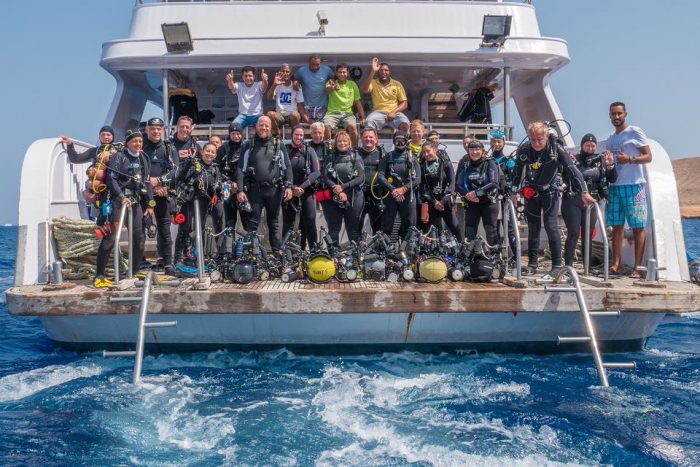
I have never had the chance to visit the lucrative reefs of the Red Sea and was super excited to learn from one of the best underwater photographers in the world, Dr. Alex Mustard.
Surrounded by experienced photographers, colourful marine life and extensive diving daily my photography was pushed to a new level. It would always make me giggle when all the huge bulky cameras would be lined up ready for the dives as they looked like an army of spider crabs ready to plummet into the water. I’m sure Alex’s rig weighed just as much as me!
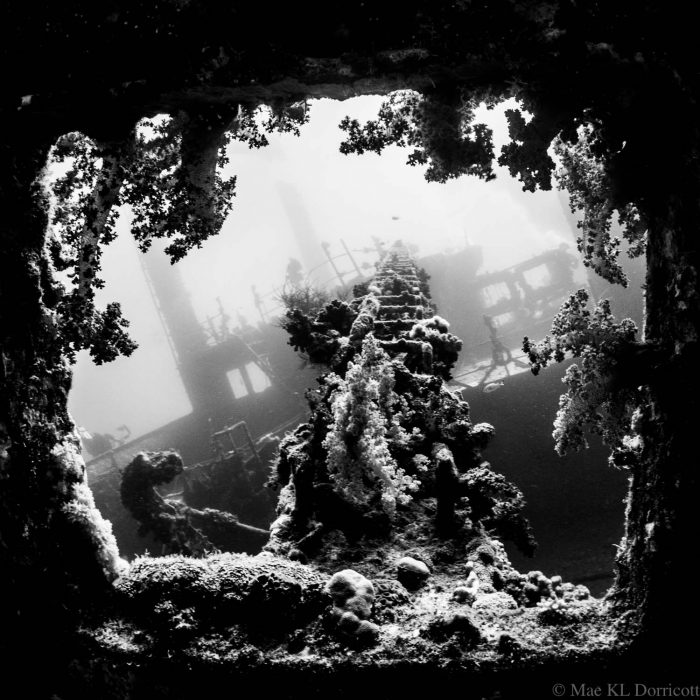
We began the workshops with wrecks. I had heard a lot about the wrecks the Red Sea had consumed and when diving them was blown away with these huge looming structures submerged underneath the aquamarine blue. It was humbling to see how the sea had reclaimed man-made structures to the degree that sometimes you couldn’t see where the wreck ended and the reef began. Alex taught us how to capture the essence and eeriness of the wrecks and for every wreck we visited a new skill was learnt.
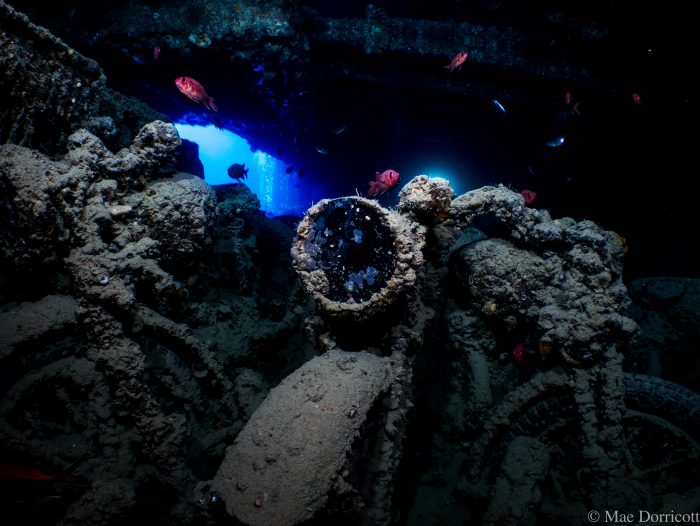
As we visited the iconic Thistlegorm with its treasure of war vehicles hidden inside it’s belly we were challenged to compose the image in the dark and position the strobes in certain ways to create light that would stretch throughout the holds of the wreck.
The elegant Giannis D presented the chance to capture the complete structure and gave us the opportunity to either work with or against the light to produce images with different results. The day we decided to dive the coral encrusted Chrisoula K the water was as flat as a pancake, the only ripple in sight was from any movement we made, and these conditions were perfect for capturing the shallow areas of the wreck that were brimming with colour.

Learning how to consider of direction of light when shooting the wrecks became an invaluable skill when moving onto the epic reef of Ras Mohammed National Park, Sinai. Shark and Yolanda is the dive site to visit in this area in the summer months due to the mass of fish life that aggregate as the waters become warmer and trigger many species of fish to spawn.
We were spoilt with massive shoals of Jacks, Unicorn fish, Barracuda, Bat fish and Anthias. But for me, the highlights were the numerous snappers that form gorgeous shapes as they swim up and down the reef out in the blue.
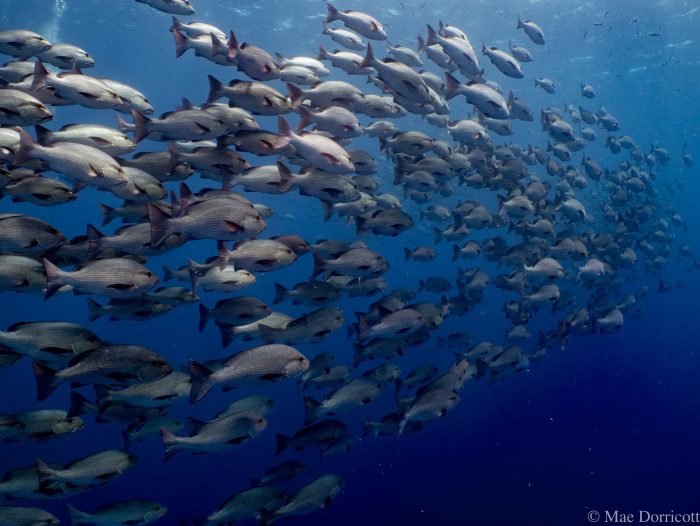
There were also the super cute schools of masked puffer fish that tried their best to waddle their way to the mating ground against the raging currents that hit the face of the reef. The puffer fish weren’t the only ones trying to battle the currents. Since Ras Mohammed is based at the tip of the ‘V’ where the Gulf of Suez and the Gulf of Aqaba meet there are some crazy currents that serve around the reef. One minute the current is pushing you from behind and then you turn a corner and it’s face on.
Now, usually I would just enjoy being swept by the powerful motion of the ocean. However, we were trying to take pictures of the gorgeous aggregations of fish, which were effortlessly swimming in the opposite direction to the current flow.

Due to battling the diverse direction of currents my appreciation for underwater photography was amplified. It was an eye opener juggling the workings of the camera and strobe, whilst battling intense currents that were sweeping you in the opposite direction to which the huge schools were heading.
It was apparent that diving had to become second nature as we jumped into the waters as underwater photographers instead of just scuba divers. Alex spent a large proportion of the workshop educating us photographers the best way to navigate the sight, using the currents and approach the shoals without spooking them and avoid dispersing them away from the reef and out into the blue.
So, we channelled our inner fish wrangler and would sacrifice fifty bar of nitrox to swim into the currents. With our huge cameras and strobes we would pelt with all our might into the current to try and get ahead of a thousand snappers to then let the current wash you back towards them on the outside of the reef and attempt to take some pictures. It was exhausting but totally exhilarating.

After a day of fish chasing, the evenings on the liveaboard consisted of photo review sessions with Alex, as each diver had the chance to showcase their favourite image of the day.
Here we watched the master in action as he would take a picture and edit it in Lightroom to make it eye catching and powerful. He could instantly tell what you needed to do next time in the water and how to tweak it to make it work.
It was such a fantastic opportunity for me to watch Alex as he knew the dive sites inside out, and has an innate knowledge of how to shoot outstanding images that were continually breath-taking and captured a moment that inspired my awe for the seas and the marine life it held.
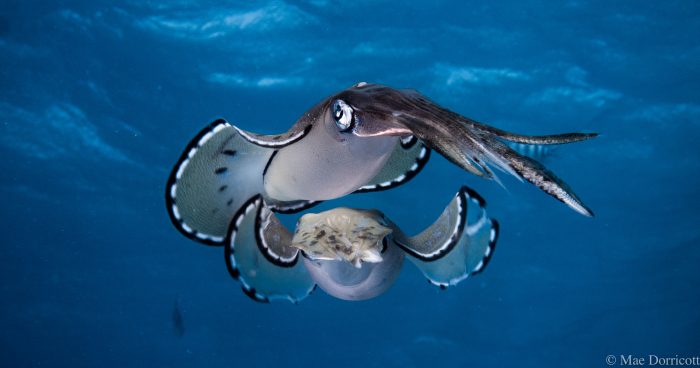
The two weeks were invaluable to understand how complex underwater photography is as a skill due to the many facets to consider to make the most of a moment you see. Not only were the dives exquisite, treating me to a bounty of fish life, but I met so many talented and extremely lovely individuals who have taught me so much and allowed my photography to develop.
I’d show you the pictures I took on the first two days compared to the last to show my improvement… but I deleted them by accident… I have also learnt the key skill of saving images properly.
A second lesson was learnt when one dive we were greeted with dolphins, a moment I have always dreamed about. Although we chased them around I had only one decent shot before my camera died. Then, on the safety stop, the pod swam carelessly past me. Lesson two always change the battery before a dive.
I feel incredibly lucky for being able to learn from one of the best underwater photographers in the world, for seeing the richness of the red sea and for making many new friends who have imparted a myriad of wise words that I will always remember with fond memories!

A huge thanks to Reef Photo & Video and Light & Motion for supplying the equipment for me to document the incredible dives with, Tornado Fleet and Scuba Travel for arranging this fantastic workshop. And an especially big thanks to Alex for giving me the time and effort to impart some of your stunning skills.
